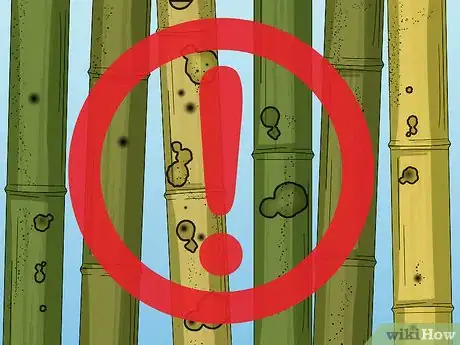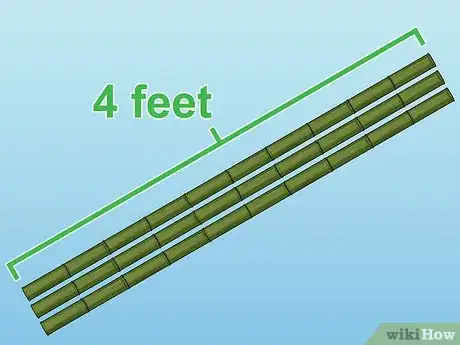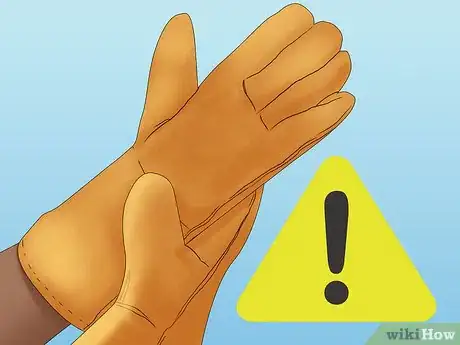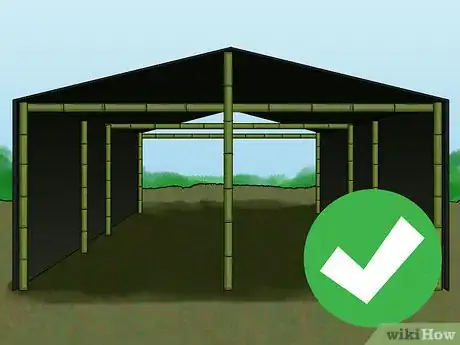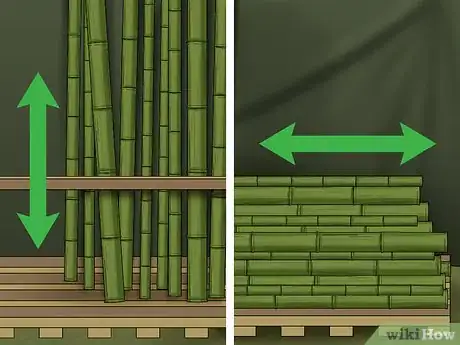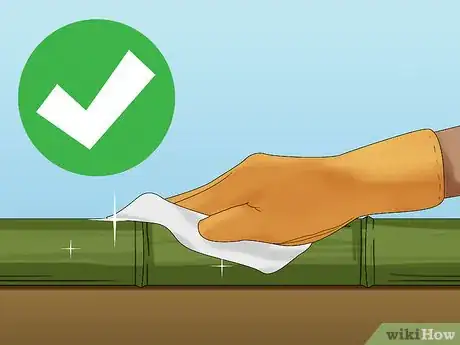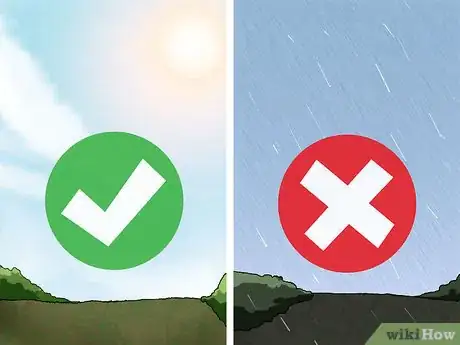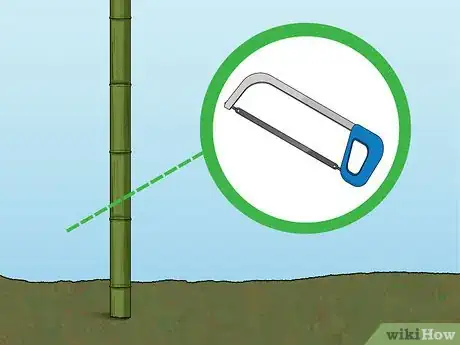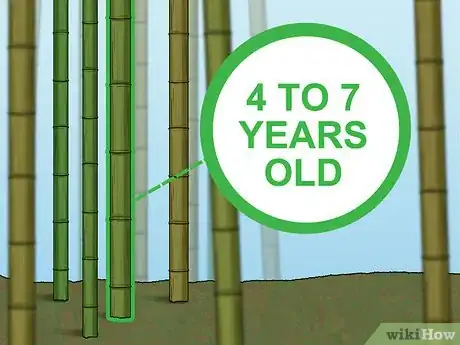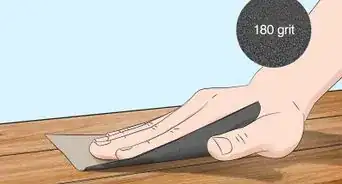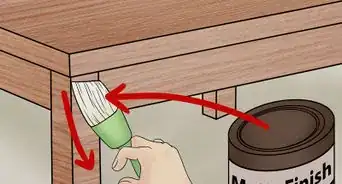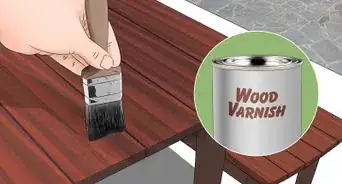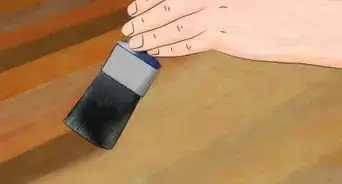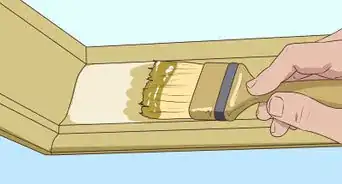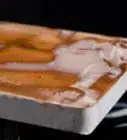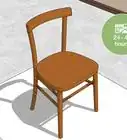wikiHow is a “wiki,” similar to Wikipedia, which means that many of our articles are co-written by multiple authors. To create this article, 12 people, some anonymous, worked to edit and improve it over time.
There are 8 references cited in this article, which can be found at the bottom of the page.
wikiHow marks an article as reader-approved once it receives enough positive feedback. This article received 14 testimonials and 95% of readers who voted found it helpful, earning it our reader-approved status.
This article has been viewed 284,497 times.
Learn more...
Making crafts out of bamboo can be fun. However, before you can use bamboo you need to let it dry out. This process is called curing bamboo. If you leave bamboo to air dry, it can take 6 to 12 weeks. However, there are shorter methods to cure bamboo for at home projects.
Steps
Curing Bamboo for Home Projects
-
1Select bamboo to harvest. If you're harvesting bamboo for an at-home project, you'll first want to select the proper culms to harvest. Culms are stems of bamboo that shoot up from the ground. Look for culms that are longer and straighter in appearance. These bamboo culms may be sturdier and their width tapers off with height. This means you'll have a variety of sizes to work with when using the culms for at home projects.[1]
-
2Watch for infected culms. Before you begin curing and storing your bamboo, remove any infected culms. Culms that contain fungus, bugs, or other problems can infect the rest of the culms.
- Look for circular ring patters, which can indicate fungus. While fungus is mostly cosmetic and can be removed, it can be a pain if it spreads. If you only have a few culms that look like they might have fungus in an otherwise healthy batch, you might want to simply toss the infected culms.[2]
- Some viral infections leave mosaic-like patterns on bamboo culms. These culms should be discarded. You should also get rid of culms infected with a black, sooty mold.[3]
- Bugs and parasites can infect bamboo culms. Watch for a white substance on shoot tips. If you notice such a substance, peel back the culm leaves and look for small, pink bugs. Such culms should be discarded as the pesticides required to treat such infections are pricey and time consuming.[4]
Advertisement -
3Prepare your culms. Once you've gathered culms and checked for infection, prepare them for the curing process. It's easiest to simply use a grill to cure bamboo for home projects. Therefore, you may want to saw the bamboo culms into manageable pieces of 4 feet or so. You can use a saw or clippers that can be purchased at most hardware stores.[5]
-
4Use heat to cure the bamboo. You can use an outdoor gas grill to cure bamboo at home. You should remove the racks from the grill and then place the bamboo culms inside one at a time.
- Turn the heat to high. Watch for the bamboo to change color slightly. This indicates resin rising to the surface, important to the curing process as it strengthens culms.[6]
- Take an old rag and rub the resin into the bamboo culms. The color of the bamboo should slowly change from deep green to mint green. Once the entire culm has reached this color, set it aside somewhere to cool.[7]
- Wait for the culm to be cool enough to handle. Then, poke holes in its inner membranes. You can use any tool that can poke through bamboo culms, such as sharp scissors. This will quicken the drying process.[8]
-
5Take safety precautions. Always wear protective gloves during the curing process to avoid getting burned. When setting bamboo out to dry, choose a non-flammable surface to avoid fire.[9]
Curing Large Amounts of Bamboo
-
1Prepare a storage area. If you're curing a large amount of bamboo, you need a storage area. Proper storage assures your bamboo will dry out in a healthy, safe fashion.
- Keep the culms away from direct soil as this prevents fungal or insect infestations.[10]
- Make sure you do not dry culms in direct sunlight, as this can lead to quick changes in moisture that causes bamboo to crack and dry out. Try covering your bamboo with a tarp.[11]
- Make sure culms have decent air ventilation. This can prevent damage while drying.[12]
-
2Decide between vertical or horizontal stacking. When drying, bamboo is usually stacked either vertically or horizontally. There are pros and cons to each stacking option.
- The main upside to vertical stacking is that it lessens the chance of a fungal infection. However, a sturdier support system will be needed for vertical stacking to prevent poles from bending.[13]
- Horizontal stacking works better for large stacks. You will need to stack bamboo on large platforms and place a thick, plastic sheet under stacks to prevent fungal infections. Keep on eye on the culms on the lower part of the platforms. They're susceptible to cracking.[14]
- Regardless of whether you choose horizontal or vertical stacking, rotate poles every 15 days. This assures culms will dry in a uniform fashion. Bamboo should be dry in 6 to 12 weeks.[15]
-
3Take measures to prevent damage. Even when stored properly, bamboo polls are subject to some damage when drying. There are steps you can take to prevent damage.
-
4Consider soaking the bamboo first. While the above method is the most conventional method to cure bamboo, some people soak bamboo before letting it air dry. This may make fungus and mold slightly less likely depending on where you live. In this method, you soak the bamboo for 90 days and then set out to dry for 2 weeks in a sunny area. This method may not work well in areas subject to extreme heat.[18]
Preparing Bamboo Beforehand
-
1Collect bamboo during the proper season. If you plan on curing bamboo, you need to collect bamboo first. Understand which seasons are best when it comes to collecting bamboo.
- The best time to harvest bamboo is at the end of the dry season in your area. Starch content is at its highest during this season, making parasite and fungal attacks less likely.[19]
- If you have a rainy season, avoid harvesting bamboo during this time. In general, bamboo is most susceptible to damage during this season.[20]
-
2Cut bamboo properly. Use a machete or saw to cut bamboo. Make sure to cut just above the first or second node above the ground. This is the best place to cut bamboo to prevent damage during storage and transportation.[21]
-
3Transport the bamboo with care. Once you've cut bamboo, make sure you transport it properly. Improper transportation techniques can lead to damage.
-
4Harvest only mature bamboo poles. When you harvest bamboo, culms should not be too young or too old. Aim for bamboo poles between 4 and 7 years old for best results.[24]
Community Q&A
-
QuestionHow would I preserve and treat bamboo?
 Community AnswerAn architect who designs large elaborate bamboo homes and buildings says they soak the bamboo in Borax and water before heat-treating it, followed by it drying out then sealing or varnishing it, and it should last a lifetime.
Community AnswerAn architect who designs large elaborate bamboo homes and buildings says they soak the bamboo in Borax and water before heat-treating it, followed by it drying out then sealing or varnishing it, and it should last a lifetime. -
QuestionRoughly how tall should good bamboo be to harvest?
 Community AnswerMany species of bamboo grow to their full heights in the first season, so height is not a determinant of age. If the bamboo still has a shiny green look or its growing sheath, it most likely is too young to harvest (thin walled).
Community AnswerMany species of bamboo grow to their full heights in the first season, so height is not a determinant of age. If the bamboo still has a shiny green look or its growing sheath, it most likely is too young to harvest (thin walled). -
QuestionDoes wood glue work on bamboo? Is it okay to use polyurethane on harvested bamboo?
 Community AnswerWood glue works well on breaks, moderately well on the inside of the culm and not at all on the outside of the culm. Polyurethane will flake off the slick exterior of the culm as it naturally swells and contracts with temperature and humidity, so it's not a good idea to coat bamboo in polyurethane.
Community AnswerWood glue works well on breaks, moderately well on the inside of the culm and not at all on the outside of the culm. Polyurethane will flake off the slick exterior of the culm as it naturally swells and contracts with temperature and humidity, so it's not a good idea to coat bamboo in polyurethane.
References
- ↑ https://homegrownorg.ning.com/profiles/blogs/harvesting-and-curing-bamboo
- ↑ http://www.tropicalbamboo.com/bamboo_maintenance.asp
- ↑ http://www.tropicalbamboo.com/bamboo_maintenance.asp
- ↑ http://www.tropicalbamboo.com/bamboo_maintenance.asp
- ↑ https://homegrownorg.ning.com/profiles/blogs/harvesting-and-curing-bamboo
- ↑ https://homegrownorg.ning.com/profiles/blogs/harvesting-and-curing-bamboo
- ↑ https://homegrownorg.ning.com/profiles/blogs/harvesting-and-curing-bamboo
- ↑ https://homegrownorg.ning.com/profiles/blogs/harvesting-and-curing-bamboo
- ↑ https://homegrownorg.ning.com/profiles/blogs/harvesting-and-curing-bamboo
- ↑ http://www.guaduabamboo.com/preservation/drying-bamboo-poles
- ↑ http://www.guaduabamboo.com/preservation/drying-bamboo-poles
- ↑ http://www.guaduabamboo.com/preservation/drying-bamboo-poles
- ↑ http://www.guaduabamboo.com/preservation/drying-bamboo-poles
- ↑ http://www.guaduabamboo.com/preservation/drying-bamboo-poles
- ↑ http://www.guaduabamboo.com/preservation/drying-bamboo-poles
- ↑ http://www.greenhomebuilding.com/QandA/bamboo/preservation.htm
- ↑ http://www.greenhomebuilding.com/QandA/bamboo/preservation.htm
- ↑ http://www.primitiveways.com/bamboo%20(1).html
- ↑ http://www.guaduabamboo.com/cultivation/when-and-how-to-harvest-bamboo
- ↑ http://www.guaduabamboo.com/cultivation/when-and-how-to-harvest-bamboo
- ↑ http://www.guaduabamboo.com/cultivation/when-and-how-to-harvest-bamboo
- ↑ http://www.guaduabamboo.com/cultivation/when-and-how-to-harvest-bamboo
- ↑ http://www.guaduabamboo.com/cultivation/when-and-how-to-harvest-bamboo
- ↑ http://www.guaduabamboo.com/cultivation/when-and-how-to-harvest-bamboo
- ↑ http://www.bamboobotanicals.ca/html/about-bamboo/bamboo-growth-habits.html
- ↑ https://fdocuments.in/document/bamboo-preservation.html
About This Article
To cure bamboo, start by cutting it into pieces that are about 4 feet long. Next, remove the racks from an outdoor grill and place the bamboo pieces one at a time inside the grill. Then, turn the heat to high and watch for the bamboo to change color slightly, which indicates the resin is rising to the surface. After that, take an old rag and rub the resin into the bamboo until it turns from a deep green color to mint green. Finally, set it aside to cool and poke holes through the bamboo to speed up the drying process. For more tips, like how to cure large amounts of bamboo, read on!

